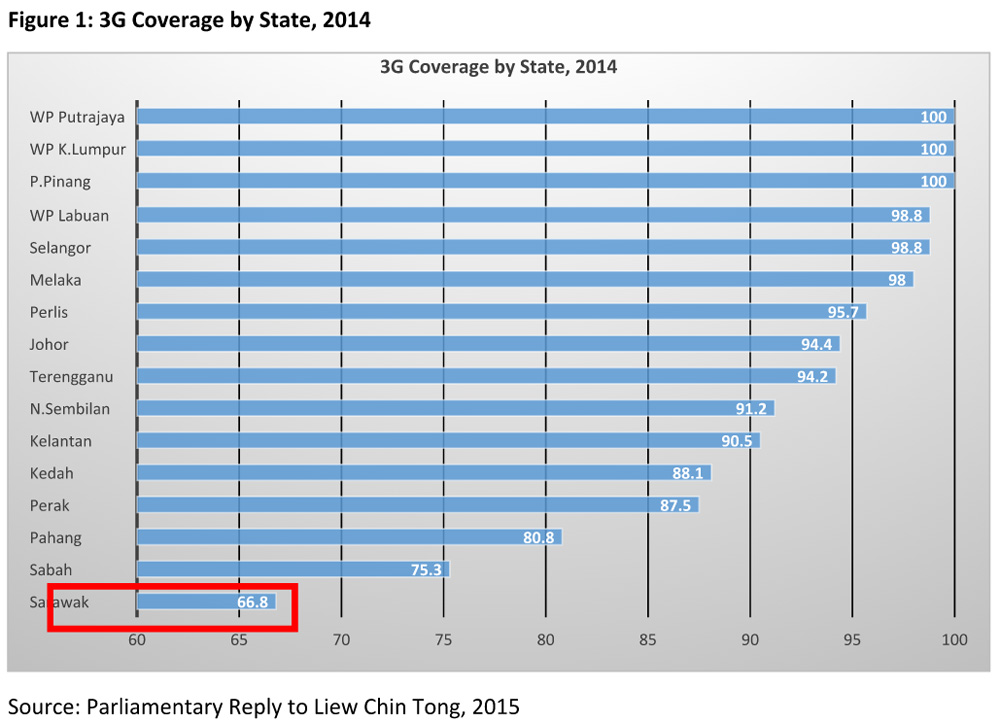COMMENT What if I told you that through your phone bill, you indirectly contribute to a fund that is supposed to be used to narrow the urban-rural digital divide? And that this fund is sitting on RM7.1 billion of cash and cash equivalents at the end of 2014?
I would wager that nine out of 10 Malaysians have never heard of the Universal Service Provision (USP) fund, a trust fund under the responsibility of the Malaysian Communications and Multimedia Commission (MCMC).
The fund was set up ‘for the implementation of network facilities, network services and application services in underserved areas and communities’. For example, telco providers can make claims to this fund for building telco towers in rural Sarawak that would otherwise not make commercial sense.
From 2003 to 2014, a total of RM12.76 billion has been collected from the telcos as their contribution to the USP fund. During the same time, RM4.8 billion of this fund has been spent. (See Table 1 below)

With this huge fund dedicated to narrowing the urban-rural digital divide, one would expect the differences in 3G coverage between Sarawak and peninsular Malaysia to be relatively small, right?
Apparently not. According to data from a parliamentary reply to my colleague, Liew Chin Tong’s question, Sarawak’s 3G coverage stood at 67 percent, the lowest coverage in the whole of Malaysia. Kelantan, which is more rural than Sarawak, has 90.5 percent 3G coverage. Even Sabah has a higher 3G coverage, at 75 percent, compared to Sarawak. (See Figure 1 below)

Not surprisingly, even within Sarawak, there are huge differences between districts in terms of 3G coverage. At the very top, not very surprisingly, is Kuching with a 95 percent 3G coverage. Surprisingly, the Miri district only has a 52 percent 3G coverage despite being a relatively urban district.
At the other end of the spectrum, the Pakan district only has a 7 percent 3G coverage despite being about an hour’s drive from Sarikei, which has a 82 percent 3G coverage (See Figure 2 below).

Can the slow rollout of 3G services to the rural areas in Sarawak be attributable solely to the challenges of distance and terrain? Not necessarily.
20-year monopoly
In peninsular Malaysia, the telco providers have some flexibility in choosing either to build their own telecommunication towers or to share infrastructure with other telco providers. In Sarawak, one company, Sacofa, has a 20-year monopoly to build and rent out telco towers to the providers.
Who owns Sacofa? Cahaya Mata Sarawak (CMS), which holds many other monopolies in the state and is closely linked to the former chief minister and current governor, Taib Mahmud, has a 50 percent stake in Sacofa with the state financial secretary’s office holding 20 percent and Celcom holding 15 percent.
(The remaining 15 percent is owned by Yayasan Sarawak (6.8 percent) and Sarawak Information Systems Sdn Bhd (7.6 percent), both of which are state-owned entities.)
The number of telco towers in Sarawak is almost certainly underprovided. With 6.8 percent of total handphone users in Malaysia, Sarawak only has 3.8 percent of telco towers.[3] Given the size of Sarawak, the number of telco towers in the state should be more than its national share of handphone users. It is hard not to attribute this under provision at least partly because of Sacofa’s monopoly which reduces capacity and incentives to expand the number of telco towers.
According to towerxchange.com, Sacofa has 765 towers in 2015 out of 20,000 towers nationwide (3.8 percent). A survey of handphone users conducted by MCMC showed that Sarawak had 6.8 percent of total handphone users in 2014.
If the urban-rural divide in terms of 3G coverage and mobile telephony is going to be reduced, then a larger share of the USP must be dedicated toward expanding coverage in rural Sarawak. At the same time, the monopoly of Sacofa on the building of telco stations must also be abolished.
This short discussion on rural mobile coverage highlights many salient points on what is wrong with the way things are done in Sarawak and how to rectify them.
A small group of well-connected people and/or companies are able to control and dominate certain sectors of the economy, especially those which require government licenses and contracts. The cement, logging, construction and the provision of telco towers are some examples.
Very often, the state has a direct or sometimes indirect stake in these companies. These individuals/companies get to reap exorbitant profits due to their oligopolistic / monopolistic positions. The consumer, especially those in the rural areas, often have to pay the price. This kind of practice needs to stop.
Part 1: Sarawak, a tale of two nations
Part 2: Sarawak’s highly unequal economic structure
Part 3: Low incomes a massive challenge for Sarawak
Part 4: Complex causes of poor education levels in Sarawak
Part 5: Why there are so few poor rural households in Sarawak
Part 6: Political competition will boost rural development in Sarawak
ONG KIAN MING is the DAP Member of Parliament for Serdang. He can be reached at [email protected]

